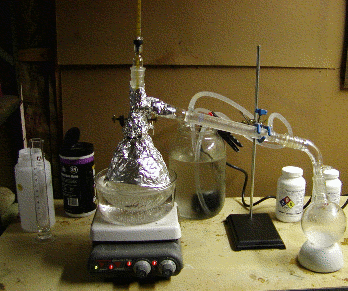And by virgin, I didn't mean PTFE. I meant that I haven't yet exposed the pump to anything but dry air. As for the red rubber vacuum tubing, it was
hard for me to source and was relatively expensive. I'd rather destroy cheap tubing from the hardware store by leaching plasticizers than damage my
precious vacuum tubing.
I know I may be over planning things, but that's just my nature. I can't (yet) help being OCD. It's also in my nature to question everything. I
believe that inquiry is the whole point of this forum, and of science as a whole. (Please do not drag this thread off topic by discussing the nature
of science further.)
I thank you, however, for your advice. I <em>do</em> worry about <em>everything</em>. But, hey! That's what medication is
for.  |









